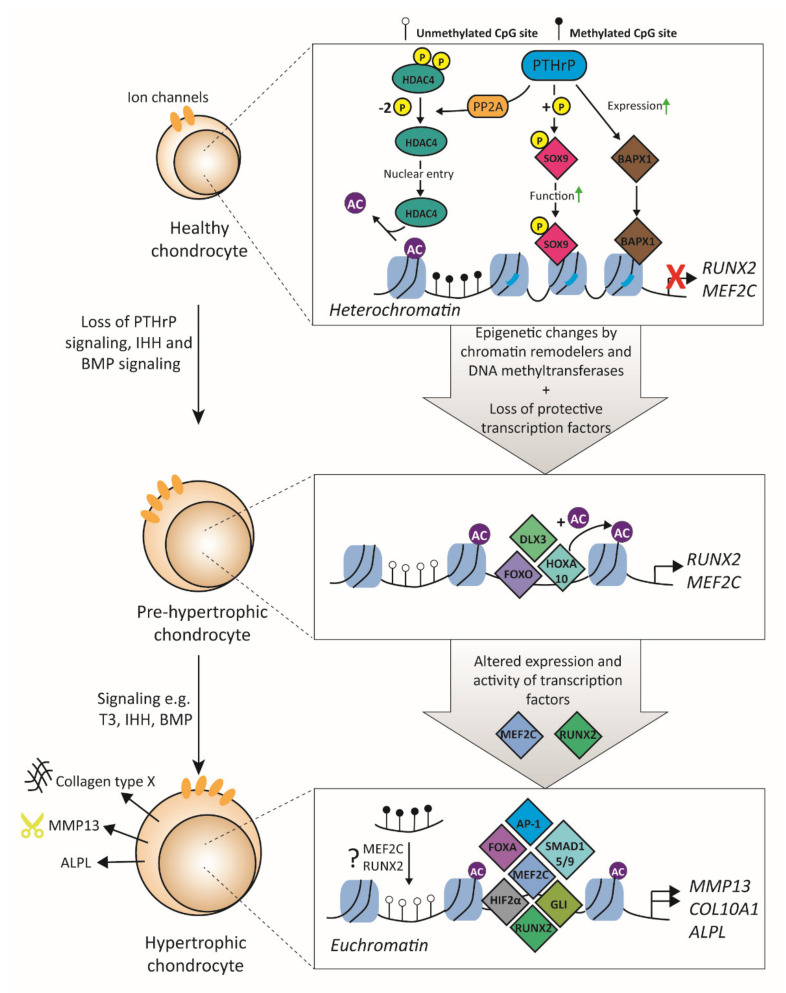Figure 3.
Transcription factors involved in chondrocyte hypertrophy. In a healthy chondrocyte, hypertrophy-related genes are silenced due to the compact composition of the nucleosomes and transcription factors that repress hypertrophy. PTHrP is a crucial signaling molecule that represses chondrocyte hypertrophy by increasing expression of BAPX-1, increasing SOX9 activity, and inducing nuclear translocation of HDAC4 to maintain hypoacetylation of the promoters of RUNX2 and MEF2C. In prehypertrophic chondrocytes, epigenetic changes occur by, e.g., loss of chromatin remodelers and loss of protective transcription factors against hypertrophy. This leads to increased chondrocyte volume and the opening of chromatin. TFs such as HOXA10, FOXO1, and DLX3 can bind in the promoter of RUNX2 and activate its transcription. RUNX2 and MEF2C are the MR of chondrocyte hypertrophy and regulate, in turn, with other transcription factors, the expression of hypertrophy makers such as COL10A1, MMP13, and ALPL. PTHrP = parathyroid hormone-like protein; SOX9 = SRY-BOX transcription factor 9; BAPX-1 = homeobox protein Nkx-3.2; HDAC4 = histone deacetylase 4; NFκB = nuclear factor kappa B; RUNX2 = runt-related transcription factor 2; MEF2C = myocyte-specific enhancer factor 2C; AP-1 = activator protein 1; GLI = glioma-associated oncogene; FOXA = forkhead box transcription factor class A; HIF2α = hypoxia-inducible factor 2-alpha; COL10A1 = collagen type X; MMP13 = matrix metalloproteinase 13; ALPL = alkaline phosphatase.

